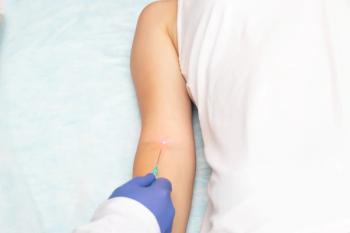
Stevia Extract May Prevent Diabetes
Stevia found to stimulate a channel that regulates insulin secretion.
Stevia, a sweetener extracted from the Stevia rebaudiana plant, has an extremely sweet taste, but it does not raise blood glucose levels like sugar does.
A new study published by Nature Communications found that stevia stimulates a protein involved with taste perception and is also involved with releasing insulin. These findings could lead to novel approaches to preventing and treating diabetes.
Stevia extract has become a popular sugar substitute that has the added benefit of being calorie-free. While it was generally thought to have a positive effect on blood glucose levels, it has not been previously understood.
"Our experiments have shown that the active components of stevia extract, stevioside and steviol, stimulate the ion channel TRPM5," said researcher Koenraad Philippaert, PhD. "The proteins known as ion channels are a kind of microscopic pathway through which minuscule charged particles enter and leave the cell.”
The authors noted that TRPM5 plays an important role in multiple biological processes.
"TRPM5 is first and foremost essential for the taste perception of sweet, bitter, and umami on the tongue," Dr Philippaert said. "The taste sensation is made even stronger by the stevia component steviol, which stimulates TRPM5. This explains the extremely sweet flavour [sic] of stevia as well as its bitter aftertaste."
TRPM5 also plays a very important role in
The ion channel prevents abnormal blood sugar levels in type 2 diabetes, where the body releases insufficient amounts of insulin.
"If mice consume a high-fat diet for a long period of time they eventually develop diabetes," said researcher Rudi Vennekens explains. "But this is less the case for mice that also receive a daily dose of stevioside: they are protected against diabetes. Stevia did not have this protective effect on mice without TRPM5. This indicates that the protection against abnormally high blood sugar levels and diabetes is due to the stimulation of TRPM5 with stevia components."
The findings suggest that stevia could be used to develop novel preventive approaches for diabetes that target the TRPM5 ion channel to evade disease onset, according to the study.
“Considering the tremendous health cost of type 2 diabetes and that stevioside is a widely used natural product, we believe that stevioside might be a cost-effective compound for the global battle against diabetes,” the authors wrote.
However, the authors caution that additional studies are needed to explore the use of stevia in humans for blood glucose control, although the initial results in animal models were positive.
“But we must not get ahead of ourselves," Dr Philippaert said. "This is fundamental research, and there is still a long way to go before we can think of new treatments for diabetes. For one thing, the dosages that the mice received are much higher than the amount of stevioside found in beverages and other products for human consumption. Further research is necessary in order to show if our findings readily apply to humans. All this means that new treatments for diabetes will not be for the very near future."
Newsletter
Stay informed on drug updates, treatment guidelines, and pharmacy practice trends—subscribe to Pharmacy Times for weekly clinical insights.













































































































































































































